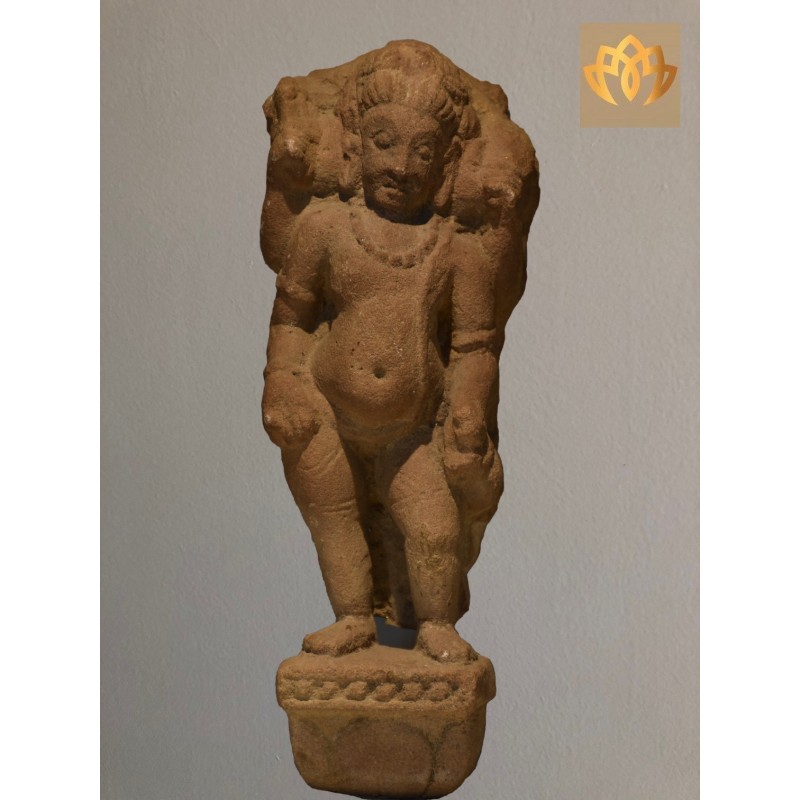



Fragment of frieze carved in sandstone. Representation of a Yaksha on a pedestal decorated with flowers. Gupta style, North India, 10th-12th century.
Height: 19 cm
Width: 7.5 cm
Depth: 5 cm
Weight: 690g
Unmounted item
The Gupta dynasty settled in the North of India at the end of the 3rd century but its origins are not well known. From the 4th century, they developed, reached their peak during the first half of the 5th century and then declined, mainly, following external invasions. We remember from this short period of history the names of Chandragupta and Samudragupta during the reign of Kumâragupta and his son Skandagupta.
At that time, Brahmanism (which we now call Hinduism) and Buddhism still coexist. In terms of sculpture, we generally speak of the schools of Mathura and Sārnāth and the temple of Deogarh.
The fragment represents a Yaksha on a pedestal decorated with flowers. Between fairy and ghost, the Yaksha represents the spirit of nature which protects the natural treasures buried in the earth. Probably, shaped between the 10 th and 12 th centuries in the North of India (Ganges valley).
Acquired in the middle of the 20th century, it entered a private collection. It is neither mounted nor exposed. The owner at the time sold this piece to a Belgian investor. The piece is presented in a recognized auction room in Italy and goes through the hands of experts in 2017. In 2020, the current Belgian owner decides to sell this piece and mandates our company to do so.
This piece is currently visible in the suburbs of Brussels or in Lyon by appointment.
This item is sold raw, unmounted.